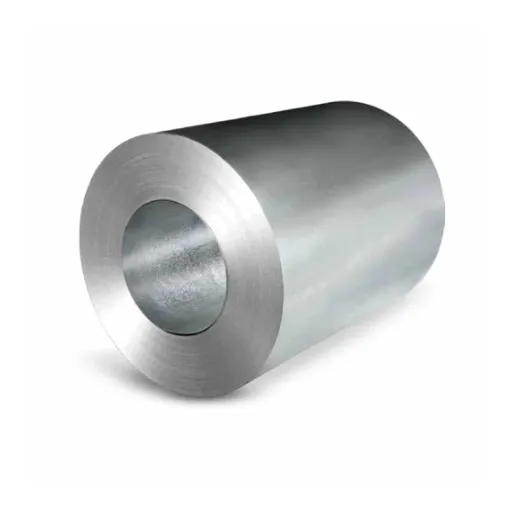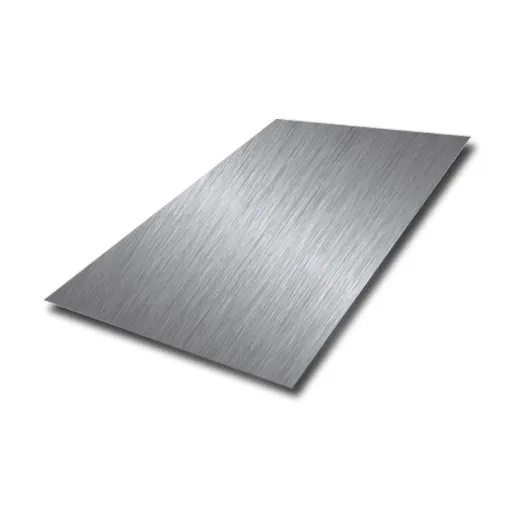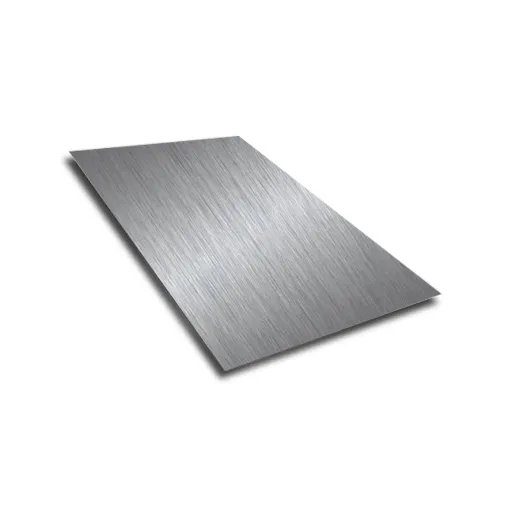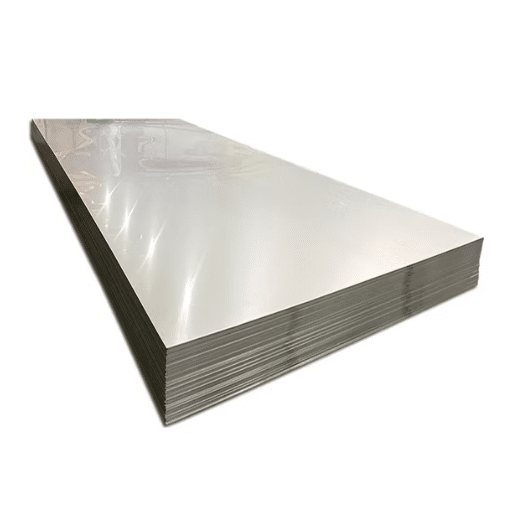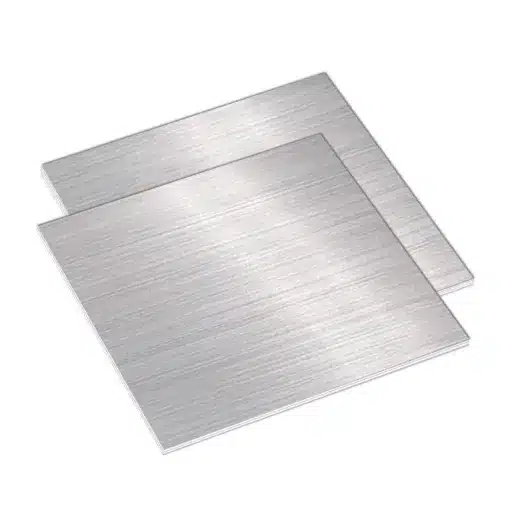Galvanized steel coils are important across fields, known for the power they possess and durability and corrosion resistance. These common materials have their hand in almost everything-a little building here, a little automotive manufacturing there, and more appliances and agricultural equipment. But have you ever pondered the making process for galvanized steel coils and the reason they stand so well against harsh weather elements? Herein lies a journey behind the curtain of the manufacturing process, piercing through the science and techniques that shape these must-have materials. Along the way, finding applications for galvanized steel coils and understanding how industry use translates into steel preferences will be examined. Whether you belong to the industry or are simply interested in knowing about the processes underneath everyday materials, the following guide into the world of galvanized steel coils will present some key insights.
The Galvanization Process
What is Galvanization?
Galvanization occurs with the protective zinc coating application on steel or iron so as to prevent rust. Such coatings stand between corrosion factors such as moisture, oxygen, and others. Thus, the coating makes the material last longer and more durable, for which industries can use them.
The most common method for galvanizing is hot-dip galvanizing, where steel or iron is dipped into molten zinc bath. It provides a solid, intimate bond between zinc and the base metal to give a uniform and tough coating. Another way is electro-galvanizing, which uses electricity to apply the zinc coating. Each method has its advantages—whether less costly or a better surface finish—depending on the application.
The whole process of galvanization has gained much importance because of its efficiency and relative cost-effectiveness. From construction materials such as beams and roofing to automotive parts and all kinds of outdoor structures, little can be done nowadays without galvanized steel. It resists rust and needs almost no maintenance when placed into a weather-harsh environment or one where it is subject to frequent wear and tear. It strengthens the base material and promises to serve in the long run in a working environment demanding application.
Steps in the Galvanization Process
1. Surface Preparation
Preparation steps for ensuring proper galvanization must include surface preparation. Basically, the steel should be cleaned of dirt, grease, or any impurities. Generally, the steel is first degreased, then pickled with an acidic solution to remove rust or mill scale, and finally rinsed in plenty of water.
2. Fluxing
Next comes the fluxing treatment for the steel after cleaning. Normally, flux is zinc ammonium chloride. This prevents the oxidation of the surface in front of galvanising and assures good bonding of the zinc coating.
3. Galvanizing
The fluxed and cleaned steel is dipped into molten zinc at about 450°C (842°F). Here the zinc reacts with the surface of the steel to produce a series of metallurgical bonds that are very hard, thus providing protection.
4. Cooling and Inspection
After coating, the steel is taken out of the zinc bath and allowed to cool, which helps in crystallizing zinc to gain strength for a tough finish. Finally, the galvanized steel is checked for an even coating and quality standards.
Each of these steps is very important for the galvanized steel to have long life and efficiency to be applied in a variety of industrial and commercial areas. In following this systematic process, the manufacturers ensure strong materials that resist corrosion as required by the demanding performance.
Benefits of Galvanizing Steel Coils
The practice of galvanizing steel coils signifies multiple advantages, which render the material suitable for industrial or commercial use. Here are five major points with explanations:
Corrosion Resistance
The metal goes through galvanization to give it a bit of zinc grease for surface coating. This layer is to offer path-based protection for the underlying steel from moisture and corrosive elements. Environmentally exposed, these galvanized steel materials are good for 50 years in rural settings and about 20-25 years in heavy industrial exposures for coating stocks.
Low Maintenance Costs
Galvanized steel’s main advantage is that it does not require frequent repainting and repair as does untreated steel; hence, it lowers all maintenance costs involved. Such a reactive application makes galvanized steel a cheaper option for constructions and equipment exposed to aggressive environments.
Durability and Long Life
Knowing about the characteristics that provide galvanized steel coils with its unique nature, we now turn our attention to the advantages offered by a galvanized coating.
Advantages
A metallurgical bond generated during galvanizing adds strength to a coating, which resists abrasion and wear. Hence, the material remains useful even in demanding applications such as construction and transportation industries.
Complete Coverage
Galvanizing covers the whole steel, including its corners and edges. Being uniform, this coating endows comprehensive protection, something a number of other coatings are unable to provide.
Eco-friendly and Sustainable
Zinc is recyclable appreciated on environmental grounds, and its application in galvanization is consequently considered environmentally friendly. Also, galvanized steel owing to its durability requires fewer resource inputs as compared with other materials and hence satisfies the current criteria of sustain ability.
These benefits, therefore, suggest that galvanized steel coils are a fine option for an extensive array of applications, blending reliability with cost efficiency.
Understanding Galvanized Steel Coils
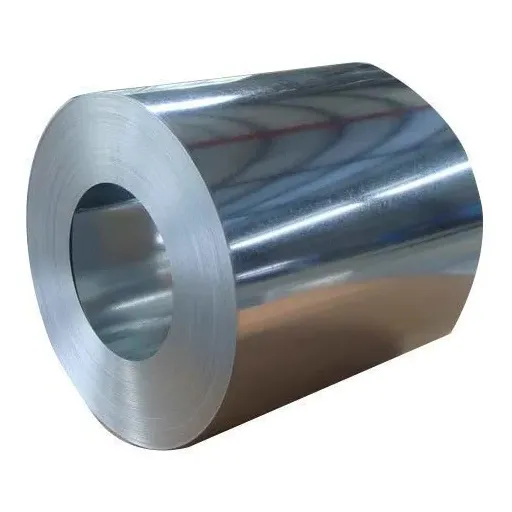
Properties of Galvanized Steel
Galvanized steel is considered the most durable and corrosion-resistant material out there. Zinc acts as a protective layer over the steel, preventing it from being attacked by atmospheric elements like moisture, oxygen, and humidity. It acts as a barrier coating and provides a sacrificial protection wherein the zinc can corrode instead of the steel when the phosphate iron steel coating is damaged. This property imparts a much extended service life to galvanized steel compared to uncoated steel.
Besides, mechanical properties are superior in galvanized steel. It has a good structural strength yet is light in weight, so it is easy to protein applications. It presently withstands mechanical wear and adverse weather conditions, retaining its strength and appearance for several years.
Galvanized steel has another important property-the thermal conductivity, which allows it to be used in installations subjected to steep temperature variations. Further, galvanized steel offers a cheap alternative to other metals with high-performance properties and recyclable characteristics, providing it with versatility. These performance properties are useful for construction, automotive, agriculture, and other industrial uses, wherein there are various functional and sustainability-based requirements.
Applications in Various Industries
Durability, corrosion-resistance, and price competitiveness are factors that would make galvanized steel an essential material for various industries. Below is a list of five major applications with respective use cases:
1. Construction Industry
Galvanized steel is one building-and-bridge-building and infrastructure Construction Industry material used. Weathering and corrosion-resistance advertise a tool for longevity outside the environment. For instance, it has been reported in industry reports that more than 50% of galvanized steel is consumed by application in building frameworks and roofing systems.
2. Automotive Industry
Automotive manufacturers use galvanized steel to make body panels, chassis, and other key components. The corrosion resistance softwares from galvanized steel would have otherwise prevented or compromised vehicle durability and safety and led to high maintenance costs. Perhaps around 80% of today’s vehicles make at least some use of galvanized steel.
3. Agricultural Industry
Galvanized steel is suitable for agricultural equipment, fencing, water tanks, and storage silos. It endures the harsh outdoor conditions present in farming. The research specifies galvanized steel structures in agriculture last for 20-30 years with minimal maintenance.
4. Energy Industry
Being the sectors of electrical towers, components of windmills, and pipeline systems, the energy industry uses galvanized steel. Increased strength and adaptability guarantee the passage of energy without environmental duress.
5. Industrial Equipment and Machinery
Galvanized steel fulfills industrial requirements with parts for plant equipment and assembly lines or anything requiring durability and resistance to a load highway. Production efficiency and operational time for machines with the aggravation of material degradation are enhanced.
These seemingly diverse functionalities have truly shown how galvanized steel becomes an essential factor in fostering and sustaining across industries.
Comparison with Other Types of Coated Steel
The corrosion resistance, durability, and applicability of galvanized steel are put on par with painted steel, powder-coated steel, and other coated varieties.
| Key Point | Galvanized | Painted | Powder-Coated |
|---|---|---|---|
| Coating | Zinc | Paint | Powder |
| Rust Resist. | High | Moderate | Very High |
| Durability | High | Moderate | Very High |
| Cost | Moderate | Low | High |
| Application | Industrial | Decorative | Industrial/Decor. |
Manufacturing Process of Galvanized Steel Coils
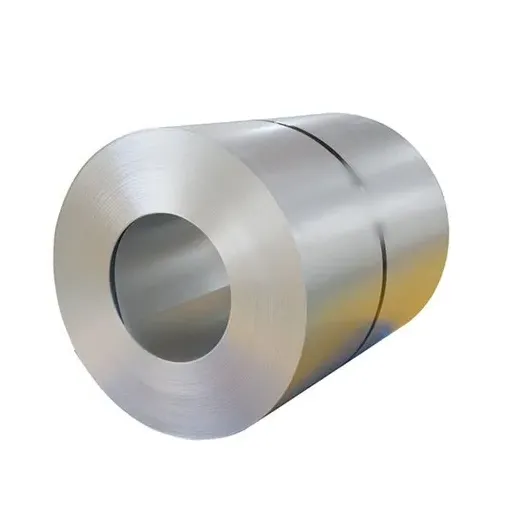
Raw Materials Used
The selection of superior raw materials for the manufacturing process of galvanized steel coils aims to render the final product worthy of acceptable standards in durability and performance. Cold-rolled steel is the major raw material used as the inclination of the base metal. This steel finds preference due to its tensile strength and ability to be cast in several ways for industrial and structural applications. Another very crucial ingredient is the coating material, zinc, used in the process of galvanization. Zinc is chosen because it possesses corrosion-resistant properties against rust and environmental attacks. Auxiliary materials like solutions for fluxing purposes or pretreatment chemicals are used to clean and prepare the steel surface for coating, providing good adhesion of the zinc layer.
The other key point that can be taken into account in the manufacture of galvanized steel coils is the exact composition of materials. The cold-rolled steel has well-defined composition elements of carbon, manganese, and silicon, all of which enhance the strength and flexibility. On the other hand, the zinc might consist of slight amounts of aluminum, thus improving the bonding of steel substrate to the zinc layer. This material combination enhances the physical properties of the coils while also offering excellent resistance to harsh weather conditions that may prolong the aging of this material in demanding environments.
The raw material selection and preparation process play an important role in the quality and performance of galvanized steel coils. Manufacturers use the advanced supply chain system to obtain materials that are consistent with industry standards and comply with governmental standards for efficiency purposes. Moreover, sustainability is being increasingly preferred as companies choose to use recycled steel and environmentally friendly methods of zinc production to minimize environmental threats. Hence, safe materials, combined with environmentally conscious engineering, continue to pioneer state-of-the-art galvanized steel products for diverse applications.
Production Techniques
Manufacturing galvanized steel ensures durability, corrosion resistance, and a prolonged life span in service. Hot-dip galvanizing represents one of the most common methods, wherein the steel is immersed in a bath of molten zinc to produce a protective coating that grips the steel on its surface. This method fulfills the higher level requirements of an industrial process while providing uniform coatings and is suitable for environments requiring outdoor and marine applications. Also, improvements in hot-dip galvanizing have led to enhanced control mechanisms permitting closer control over thickness and surface finish.
Electro-galvanization is yet one more innovative production technique. In contrast to hot-dipping, electro-galvanization describes the application of a zinc coating formed by an electric current which bonds the zinc onto the steel surface. This process results in a thinner coating but one that is highly uniform. Hence, it is used for items requiring a smooth finish and some aesthetic appeal, such as automotive parts and household appliances. Accuracy and precision need to be of utmost importance when making this choice for applications.
In an attempt to improve operational efficiency and sustainability, manufacturers have been progressively employing automation and digital monitoring systems in production. Equipped with sensors and technologies such as AI, smart systems collect on-the-spot data regarding temperature, zinc usage, and coating quality, thereby reducing waste and optimizing energy consumption. These improvements are aimed at making production more efficient while simultaneously promoting a worldwide effort to develop eco-friendly manufacturing ecosystems. Production evolves with various technical approaches and the use of state-of-the-art technology so that galvanized steel may meet the growing demands of modern industries in an environmentally responsible manner.
Quality Control Measures
Quality control has to be conducted during the industrial procedure of galvanized steel so that at the end, the product meets with industry standards and customer expectations. First in the process, all of the raw materials undergo rigorous inspection, checking the quality of the steel along with the additives of the process. Advanced testing equipment examine the materials for composition and surface texture, thus meeting the specifications. Such preparations minimize defects developing at later stages and ensure a quality base for galvanization.
Different all-important points such as coating thickness, adhesion, or uniformity are measured in the galvanization process. Coating thickness measurement is usually done with non-destructive testing machines such as an X-ray fluorescence (XRF) analyzer so as to not damage the surface. The measuring techniques provide the most accurate data and ratings are based on international standards such as ASTM A123 or ISO 1461. Such monitoring campaigns in-line watch zinc consumption, zinc application, and coating developments so that operators can make decisions beforehand should inefficiencies or inconsistencies arise.
These checks, which are done in postproduction, ensure that galvanized steel products remain reliable and durable. The samples undergo corrosion-resistance procedures, such as salt spray tests, which simulate the long-term impact of harsh atmospheric conditions. Mechanical tests – bending, impact, tensile tests-were also carried out to check the steel’s strength and flexibility. Keeping them with adequate documentation and traceability allows the suppliers to generate reports to assure the end users that their galvanized steel has met the requirements of contemporary industries and thus boost confidence in the product itself.
Applications of Galvanized Steel Coils
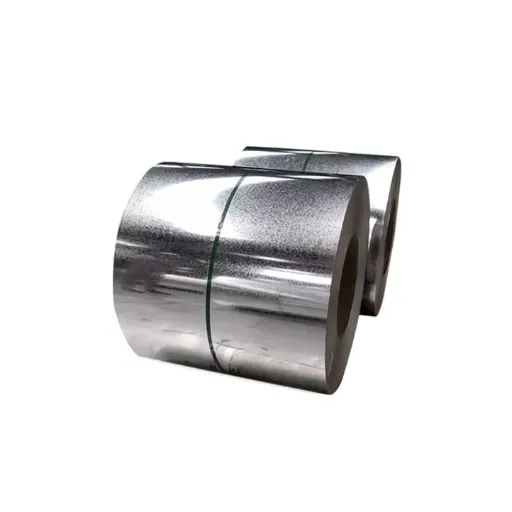
Use in Roofing Materials
Galvanized steel coils are used extensively for roofing purposes for their durable and good weather-resistant property. The zinc coating on galvanized steel protects it against rust and corrosion, making it suitable for exposure to varying environmental conditions. Roofing systems constructed using galvanized steel provide long-lasting coverage that can withstand intense sunlight, heavy rainfall, and even hail, ensuring minimal maintenance requirements over time.
Unlike other types of metals, galvanizing produces a steel that is light in weight. Since it falls under the category of roofing systems that require easy installation and decreased loads on building frames, there is a need for such qualities. Additionally, due to its reflective surface, glare is generated to help with thermal regulation by reflecting heat from the sun away from the building, hence reducing energy needs for cooling in warm climates. So, the gain is icing on the cake in terms of reduced utility bills and green-building promotions to save the environment.
In terms of design, galvanized steel coils offer a variety of options for aesthetically pleasing roof solutions. They are made to take the form of various profiles, including corrugated sheets and standing seam panels, to be complementary to residential, commercial, and industrial structures. With modern advancements in coatings and finishes, galvanized steel roofs come in virtually every color imaginable, giving property owners the capability to come up with both functional and visually awe-inspiring solutions for their properties. It is these many advantages that really show why galvanized steel coils are top choices for modern roofing applications.
Applications in Construction and Infrastructure
Building Frameworks
Galvanized steel is generally used by engineers to create frameworks in both residential and commercial buildings. Its tensile strength provides stability against lateral forces for supporting members.
Bridges
Being corrosion-resistant, it is preferable for constructing bridge components like beams, trusses, and decking exposed to moisture and severe weather.
Roofing and Cladding
Galvanized steel coils are employed in roofing applications with corrugated sheets and panels, to name a few-many others. A structure gets weatherproof protection and stress tests for performance through these materials.
Highway Guardrails
For road safety applications, galvanized steel is employed in the construction of guardrails roadside highways. This promotes rust resistance, accountable for concrete vehicle containment with minimal maintenance.
Utility Infrastructure
Being one for Galvanized steel utility pole and power transmission tower construction, durability, and weather resistance impart the latter with the ability to perform reliably in supporting electrical and communications infrastructure.
Role in Automotive Industry
Galvanized steel occupies an important place in the automotive industry as it stands for its ability to build and strengthen with longer durability and for corrosion resistance at an economically viable rate. Essentially, in automotive production, galvanized steel finds use in automobile components that require strength, safety, and resistance to aging. Here are five major applications for galvanized steel in the automotive field:
Body Panels
Galvanized steel is ideally suited for use in body panels of vehicles such as doors, hoods, and fenders. They are protected with zinc on their surface against rust and corrosion to ensure that the vehicle has a good lifespan in areas of high humidity or road salt.
Chassis Components
Structural components such as the vehicle chassis take advantage of galvanized steel for load bearing application with environmental wear looming large as a concern. This helps maintain the integrity of the frame under various driving conditions.
Exhaust Systems
One essential part of an exhaust system would be galvanized steel because it withstands heat and corrosive exhaust gases. That is to say, galvanized steel is used in exhaust pipe lines and mufflers so that they can last long periods without frequent replacements.
Fuel Tanks
The fuel tanks benefit in durability and resist corrosion that arises from constantly fluctuating fuel levels and moisture, thus enhancing the safety and reliability of the vehicle.
Reinforced Safety Features
Galvanized steel is used in impact beams and side reinforcements that constitute key safety components, wherein it is required to resist impact forces that occur in collisions and protect passengers. This material supports safety standards while ensuring cost-efficient manufacturing.
Industry data show that the global automotive galvanized steel market is projected to grow substantially, with increasing consumer demand for corrosion-resistant materials and the increased life cycle of vehicles.
Market Insights and Trends
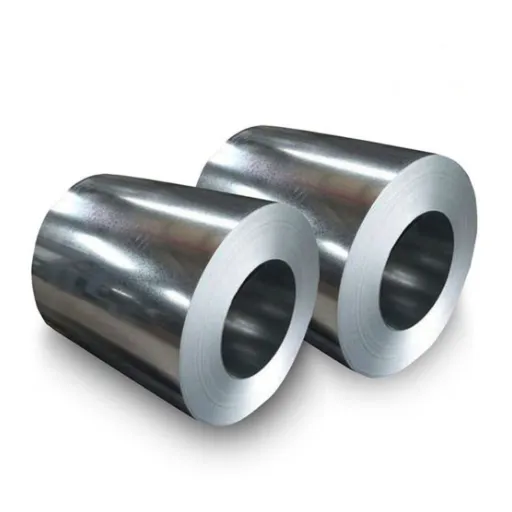
Current Market Demand for Galvanized Steel Coils
The demand for galvanized steel coils has considerably grown in the recent years because of their immense applications across industries. It is one of the largest uses of these materials in automotive manufacturing, where components require resistance to corrosion without sacrificing strength. With more advanced EVs and boosted global production of EVs, galvanized steel coils are now increasingly being applied in light-weight vehicle components that also require a good measure of strength. At the same time, the need for environmental compliance and fuel efficiency in automotive design has brought forth a much larger durable, corrosion-resistant material requirement, thus pushing the utility of galvanized steel.
Further in the realm of galvanized steel coils come the construction and infrastructure industries. With growing investments in residential, commercial, and industrial construction projects across the world, especially in emerging countries, the demand has surged. Developing and contracting galvanized steel for roofing, framework, and HVAC applications due to its durability and low maintenance requirements. Furthermore, modular construction techniques, which emphasize fully prefabricated materials with good structural properties, further strengthen the demand for galvanized steel products.
The other factors augmenting market growth for the galvanized steel coil are technological inputs into galvanization. These are advances in high-temperature continuous galvanizing and improvement in coating techniques, which improve product performance and reduce production costs. Demand will increase and is expected to increase according to recent forecasts, as the manufacturers try to keep up with higher standards for quality and sustainability. With all governments pushing for greener construction methods and materials made from eco-friendly materials, this further goes with the options available through superior recyclability and energy efficiency of galvanized steel. This link between sustainability ambition and the inherent attributes of materials pushes galvanized steel coils into prominence at par with the dynamic market.
Future Trends in the Galvanized Steel Industry
Galvanizing represented steel has much opportunity for deeper innovation with changes in regulation and concomitant sustainability worldwide. There are growing trends where increased incorporation of cutting-edge manufacturing processes like automation or AI is being employed for the sake of production optimization and minimal wastage. Through these technologies, processes of coating can be performed optimally, thus allowing greater product consistency and, thereby, cost reduction favoring galvanized steel in the marketplace.
Another trend is the focus on ultrahigh strength steel( UHSS) grades that fulfill the present-day requirements of construction and automobile sectors for lightweight yet good strength materials. This will also be in conformism with worldwide movement towards light weighting and fuel efficiency in automobiles, along with sturdy infrastructure development.
The prospects for galvanized steel demand remain buoyed by significant urbanization and infrastructure expansion in Asia-Pacific and Africa. At the same time, galvanized steel is topping the lists of materials for renewable energy projects in Europe and North America-wind turbine components and solar panel mounts are just a few applications given the material’s resistance to corrosion and durability.
Finally, in a more eco-friendly approach toward production methods, zinc-aluminum-magnesium coatings are being popularized-the main environmental challenge considered by the industry in its coating development. Here, the environmental impact is minimized by using a coating material that offers better performance and longer service life while consuming fewer resources. Together, these indicate a growth path marked by resilience and technological advancement in the galvanized steel sector.
Challenges Facing the Market
The galvanized steel market runs very fast but faces several significant constraints that affect its growth and stability. Price volatility in raw materials-nearly zinc and steel-is an issue. Fluctuations in prices bring about disturbances in production schedules, increase the cost of manufacture, and tighten profit margins for producers. In addition, global economic conditions are imperative to the supply chain’s efficiency and its demand. Economic downswings, geopolitical tensions, or trade restrictions could create shortages or cause delays in supply, thus hurting market realizations.
Another major difficulty is that environmental regulations keep tightening with every passing region. With high temperature for the implementation of sustainable production practices, regulatory compliance often requires good investments in new technologies and infrastructures. These costs may not be borne by small-scale manufacturers, thus reducing their ability to compete in the market. Recycling and waste disposal are additional heavy considerations, as the industry tries to lessen its environmental impact while upholding good standards in production.
Lastly, the market is under some pressure from advancing alternative materials and competitors who develop them. The innovations of composites and the rise of lightweight, high-performance alternatives are fast gaining commercialization. Sometimes, these alternative materials deliver better solutions than galvanized steels in very special cases, thereby possibly affecting the historical growing demand for galvanized steels. It is therefore paramount for the industry to associate R&D into the forefront of the growth curve, helping galvanized steel to be a relevant solution for versatility and sustainability in this quickly changing market landscape.
References
- University of North Texas – Properties of Galvanized and Galvannealed Advanced High-Strength Steel
This document discusses the suitability of various steel grades for galvanizing and galvanneling processes. - MIT – Resistance Spot Welding of Galvanized Steel
A study on material variations and process modifications affecting resistance spot welding conditions for galvanized steel. - Colorado School of Mines – Characterization of Galvanized/Galvannealed Sheet Steel Defects
This research focuses on the hot-dip galvanizing process and the additional annealing step for producing galvannealed steels. - National Renewable Energy Laboratory – Galvanized Steel Coil Process
A detailed process description of galvanized sheet production, including raw materials and pre-treatment steps.
Frequently Asked Questions (FAQ)
Q: What does it mean when steel coils are galvanized?
A: Steel coil galvanization relates to coating steel coils with zinc through the hot-dip galvanizing process. A zinc coating is provided that would act as a separation between the steel and environmental factors, thus providing corrosion resistance and durability, particularly outdoors.
Q: How is coating carried out on steel coils?
A: Coating on steel coils involves giving the steel coils a bath in molten zinc. The continuous hot-dip galvanizing treatment imparts an even coating-weight, thereby bestowing the galvanizing advantage of corrosion protection. The thickness of the zinc layer can be made to vary depending on specification.
Q: What kind of advantages are offered by galvanized steel coil?
A: Galvanized steel coils are favored for many reasons, such as corrosion resistance, having a better finish, and weldability. The zinc layer acts as a sacrificial layer, which provides cathodic protection to the steel itself, useful for applications spread across various industries.
Q: Can galvanized steel coils be used for both indoor and outdoor applications?
A: Galvanized steel coils are versatile materials applicable for use in both indoor and outdoor settings. When installed outdoors, their corrosion resistance is highly sought after, whereas in indoor applications, factors such as elegant looks and durability take precedence.
Q: How do we ensure proper adherence of the zinc coating?
A: Zinc coating properly adheres during the galvanizing process if the steel surface has undergone a thorough cleaning prior to the immersion. This cleaning removes contaminants on the surface, allowing zinc to have a direct bond with bare steel.
Q: What types of steel can be galvanized?
A: Different types of steel such as carbon and structural can be galvanized. These types of steel can be chosen depending on the project needs and specific application on which level of corrosion resistance is required.
Q: How does the zinc layer protect against corrosion?
A: The zinc layer provides corrosion protection by acting as a barrier between the steel and the environment. Also, zinc corrodes more slowly as compared to steel; if ever installed in aggressive conditions, zinc has the ability to shield the steel substrate for longer periods of time.
Q: What do you mean by galvanized and galvalume steel?
A: Galvanized steel is coated only with zinc, while galvalume steel is coated with a mixture of zinc, aluminum, and silicon. Galvalume does give better corrosion resistance and is most common for some applications; nonetheless, both coatings are intended to improve the life of steel.

